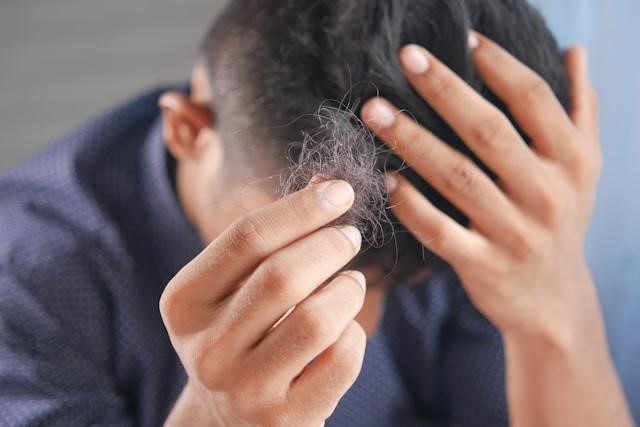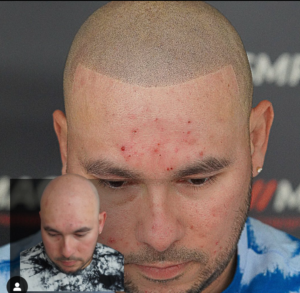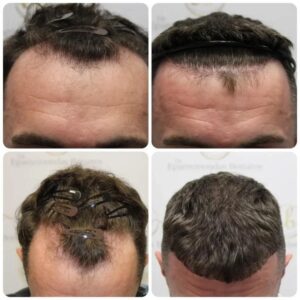Hair transplant surgery has become a popular solution for those with hair loss. As technology and techniques have advanced, this procedure offers a more natural and long-lasting remedy for baldness and thinning hair.
Hair loss can significantly impact self-esteem and confidence, whether driven by genetics, health issues, or age. However, surgical methods have made it possible to solve this condition permanently. Both men and women can now undergo hair transplants to combat hair loss.
This blog post delves into hair transplant surgery’s benefits, risks, and recovery process, providing comprehensive insights for anyone considering this transformative procedure.

Image Credit: Unsplash
Table of Contents
Key Takeaway
Hair transplant surgery is a viable solution for permanent hair restoration, offering numerous benefits such as natural-looking results and improved confidence. However, it’s essential to understand the potential risks and the detailed recovery process involved. This blog will guide you through what to consider before the procedure, the benefits you can expect, the possible complications, and the recovery timeline to help you make an informed decision.
What to Consider Before Undergoing Hair Transplant Surgery
Before deciding on hair transplant surgery, several factors you need to consider carefully:
1. Expectations: Setting realistic expectations is vital. While hair transplants can significantly improve hair density, they may not restore your hair to its original fullness.
2. Cost: Hair transplant surgery can be expensive and typically not covered by insurance. Be prepared for the financial commitment.
3. Surgeon’s Expertise: Choosing a skilled and experienced surgeon is crucial for successful results. Research and select a board-certified specialist with a good track record.

Image Credit: Unsplash
What are the Benefits of Hair Transplant Surgery?
Hair transplant surgery offers several benefits, making it an appealing option for those experiencing hair loss:
1. Natural-Looking Results: Modern techniques like Follicular Unit Transplantation (FUT) and Follicular Unit Extraction (FUE) provide natural-looking results, as the transplanted hair blends seamlessly with existing hair.
2. Permanent Solution: Unlike temporary solutions such as wigs or hairpieces, hair transplant surgery offers a permanent solution to hair loss.
3. Low Maintenance: Transplanted hair requires minimal maintenance after surgery than other hair restoration methods.
4. Boosts Confidence: Improved appearance and self-esteem are significant psychological benefits of hair transplant.
5. Cost-Effective in the Long Run: Although the initial cost is high, hair transplant can be more cost-effective over time than ongoing non-surgical treatment expenses.
Risk and Possible Complications of Hair Transplant Surgery
Like any surgical procedure, hair transplant surgery carries certain risks and potential complications. Although hair transplants have a high success rate, there are also possible risks, which depend on the hair transplant technique the surgeon performs.
1. Infection: There’s a risk of infection at the surgical site. Following post-operative care instructions is crucial to minimize this risk.
2. Scarring: Scarring can occur Depending on the technique used. FUT, in particular, may leave a linear scar, while FUE leaves minimal scarring.
3. Pain and Discomfort: Some pain, swelling, and discomfort are common post-surgery. These symptoms usually subside within a few days.
4. Bleeding: Minor bleeding is typical during and after the surgery, but significant bleeding is rare.
5. Shock Loss: Some patients experience shock loss, where transplanted hair falls out within a few weeks. This problem is usually temporary, and new hair grows in its place.
Recovery Process of Hair Transplant Surgery
Understanding the recovery timeline can help you prepare for the post-surgery period. The aftermath period is also a big part of the hair treatment journey and can play a vital role in getting a successful result.
Here is a highlight of what you should expect from the recovery process:
Day 1-5
The first few days are critical. The transplanted area and donor site need to be kept clean and dry. Pain relievers and antibiotics are usually prescribed to manage pain and prevent infection. Also, swelling around the forehead and eyes is common and should subside within a few days.
Day 6-10
You can start gently washing your hair as per your surgeon’s instructions. Avoid vigorous rubbing. Scabs will form around the transplanted grafts. Do not pick at them; they will fall off naturally.
Day 10-14
After about ten days, you reach a stage called the ‘Shedding Phase.’ During this phase, the transplanted hair may begin to fall out. This is a normal part of the process and should not cause concern. After this period, swelling will reduce, and the scalp will look more normal.
3 to 6 months
Around three months, new hair growth will start. Initially, it may be thin and fine. Some shedding might continue, but new hair will progressively replace the shed hair.
Ten months
Substantial hair growth is visible by ten months. The hair will continue to thicken and take on a more natural appearance. While most hair growth occurs within the first year, some patients may see continued improvement up to 18 months post-surgery.

Image Credit: Unsplash
Frequently Asked Questions and Answers
1. Is hair transplant surgery painful?
Pain is minimal during the procedure due to local anesthesia. Post-surgery, mild pain and discomfort can occur but are manageable with prescribed pain relievers.
2. How long does it take to see the final results?
Most patients see significant hair growth within ten months, but full results can take up to 18 months.
3. Are the results of a hair transplant permanent?
Yes, hair transplants offer a permanent solution as the transplanted hair is resistant to the hormones that cause hair loss.
4. Can women undergo hair transplant surgery?
Women can benefit from hair transplants, particularly those with thinning hair or specific bald patches.
5. What is the difference between FUT and FUE?
FUT involves removing a strip of the scalp to extract hair follicles, while FUE involves extracting individual follicles directly from the scalp. FUE tends to leave less noticeable scarring.
Wrapping Up
Hair transplant surgery can be a life-changing procedure for those struggling with hair loss, offering permanent and natural-looking results. However, it’s essential to thoroughly understand the benefits, risks, and recovery process to ensure you are well-prepared.
Consulting with a qualified and experienced surgeon is crucial to achieving the best possible outcome. A hair transplant can restore your hair, confidence, and self-esteem with proper care and realistic expectations.
Want to explore hair loss alternatives? Book a consultation with us, and we’ll walk you through Scalp Micropigmentation at Mac SMP.
Enjoy This Article? You May Also Like:
- How To Address A Thinning Hairline: Tips And Treatment
- Micropigmentation Of The Scalp: What You Need To Know Before Getting It Done
- Discover The Best Scalp Micropigmentation In White Plains –Mac SMP
- Confused About Hair Loss Patches On The Head? We Explain The Causes And Treatment Options
- Scalp Micropigmentation Training: From Beginner To Mastery – The Ultimate Guide To Becoming An SMP Technician


